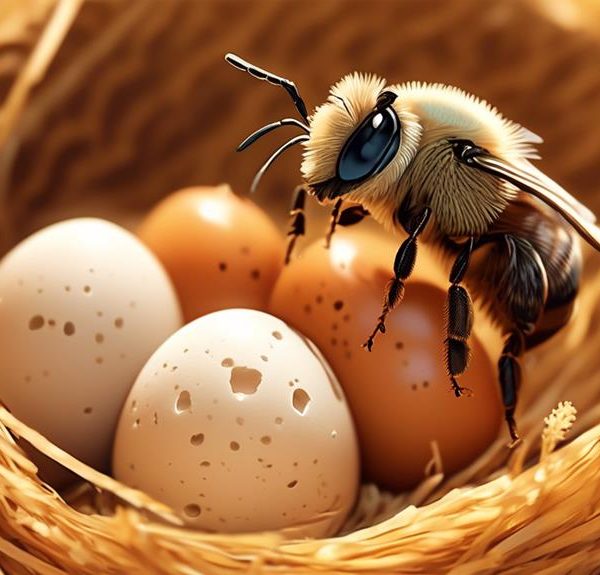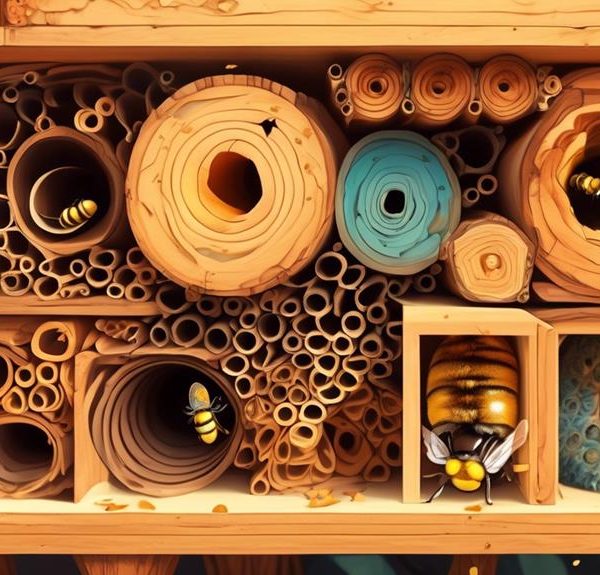Learn how to attract Mason bees, exceptional pollinators, to boost your garden's productivity by creating a haven for these beneficial insects.
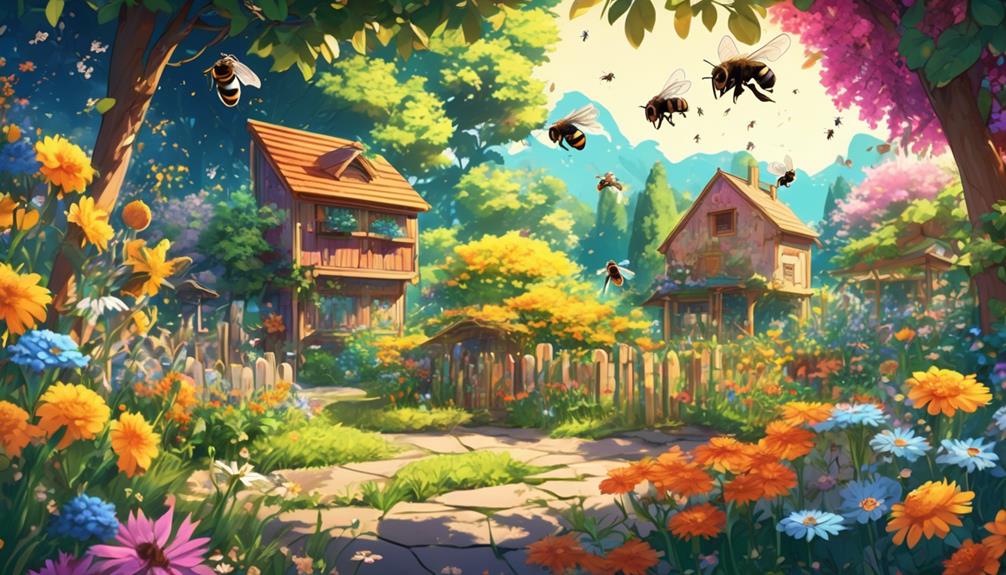
How Can I Attract Mason Bees?
Imagine this scenario: you've been working tirelessly to establish a lush, productive vegetable garden in your backyard. But despite all your efforts, you're noticing that your plants aren't pollinating as you'd like.
It could be that your garden's missing a key player: Mason bees. These solitary bees are exceptional pollinators, even more so than honeybees, and attracting them to your garden might just be the boost your plants need.
But how do you entice these beneficial insects to your space? Stay with us and we'll explore the various ways you can make your garden a haven for Mason bees.
Key Takeaways
- Mason Bees are exceptional pollinators, making them a valuable addition to any garden.
- Creating an ideal environment for Mason Bees involves providing suitable nesting sites, flowering plants, and a mud source.
- Building a Mason Bee house with small tubes or holes and positioning it in a sunny location is crucial for attracting these bees.
- Selecting a variety of native flowering trees, shrubs, perennials, and annuals that bloom at different times of the year will ensure a consistent food source for Mason Bees.
Understanding Mason Bees
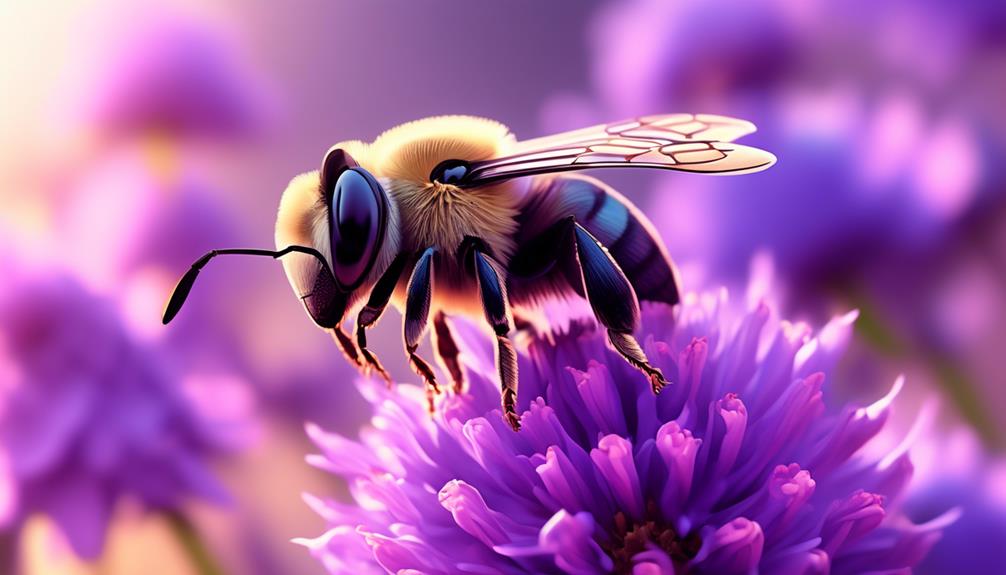
To truly attract Mason Bees to your garden, it's imperative that you understand their biology, behaviors, and preferences.
Mason Bees, part of the Osmia genus, are solitary bees, meaning they don't live in hives like their honeybee counterparts. Each female is fertile and constructs her own nests, often preferring hollow reeds or holes in wood. Unlike honeybees, they're non-aggressive and rarely sting unless severely provoked.
These bees are known for their great pollination efficiency, often outperforming honeybees. They're active in early spring, with lifespans typically lasting 6 to 8 weeks, but their larvae remain in cocoons throughout winter. They also have a preference for certain flowering plants, favoring those that bloom in early spring.
Understanding their nesting preferences is also key. They're attracted to pre-made holes and cavities, hence the name 'Mason'. They lay their eggs inside these holes, then seal them off with a mixture of plant material and mud.
Ideal Environment for Mason Bees

Creating the perfect environment for Mason Bees involves providing them with suitable nesting sites, the right flowering plants, and a mud source for their masonry work.
These solitary bees don't live in hives like honeybees. Instead, they prefer small tubes or holes, often in wood, to build their nests. You can attract them by providing bee houses with tubes of the right size, roughly 5/16 of an inch in diameter.
The right flowering plants are also crucial. Mason bees are active in early spring, so choose plants that bloom during this time. They're not picky eaters and will visit a variety of flowers. However, fruit trees, especially apple and cherry, are some of their favorites.
Lastly, don't forget about the mud. Mason bees use it to construct their nests. Make sure there's a damp patch of bare soil near the bee house. Avoid soil with a high sand content as it's too loose for their construction needs. If your soil isn't ideal, consider creating a mud pit using clay-rich soil.
With these conditions met, you'll be on your way to attracting these beneficial pollinators.
Building a Mason Bee House
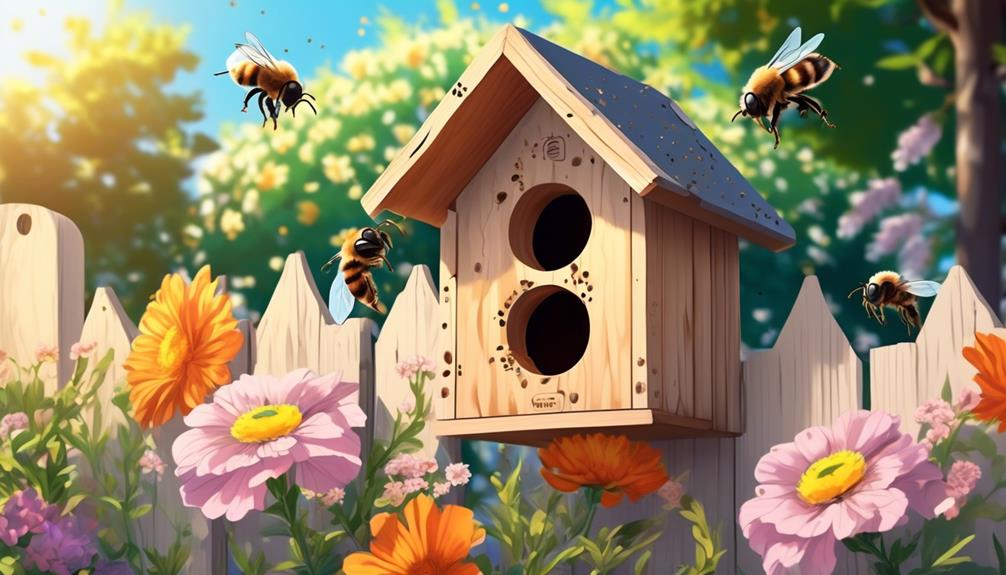
Building a Mason Bee House can be an effective way to attract these important pollinators to your garden. You'll need to construct a structure with small tubes or holes, which mimic the natural nesting sites of these bees. These can be made from a variety of materials, such as wood, bamboo, or paper.
The house should be positioned in a sunny location, ideally facing the morning sun. This helps to warm the bees as they start their day. Protection from rain and wind is also crucial to ensure the bees' comfort and safety.
Here's a simple guide:
Materials | Process |
|---|---|
Untreated Wood, Bamboo or Paper | Create tubes or holes of 5/16 inch diameter, 6 inches deep. |
Secure, Sunny Location | Face the house towards the morning sun, shielded from wind and rain. |
Optional: Mud Source | Provide a nearby mud source for bees to use in their nests. |
Plant Selection for Attraction

Once you've built your mason bee house, selecting the right plants to attract these beneficial pollinators is the next crucial step.
Mason bees are attracted to a variety of native plants, so it's important to diversify your garden with an array of colorful blooms.
First, consider incorporating native flowering trees and shrubs, as they provide an abundance of pollen and nectar. You'll notice a particular affinity mason bees have for fruit trees like apple, cherry, and plum. They're also fond of shrubs like willow and elderberry.
Next, add a mix of perennials and annuals to your garden. Mason bees are particularly drawn to flowers like lavender, rosemary, and sage. They also enjoy daisy-like flowers and those from the mint family. Plant these in clusters to create a more attractive feeding ground.
Lastly, consider plants that bloom at different times of the year to ensure a consistent food source. Early spring bloomers are essential as mason bees emerge from their cocoons at this time.
Maintaining a Bee-Friendly Garden
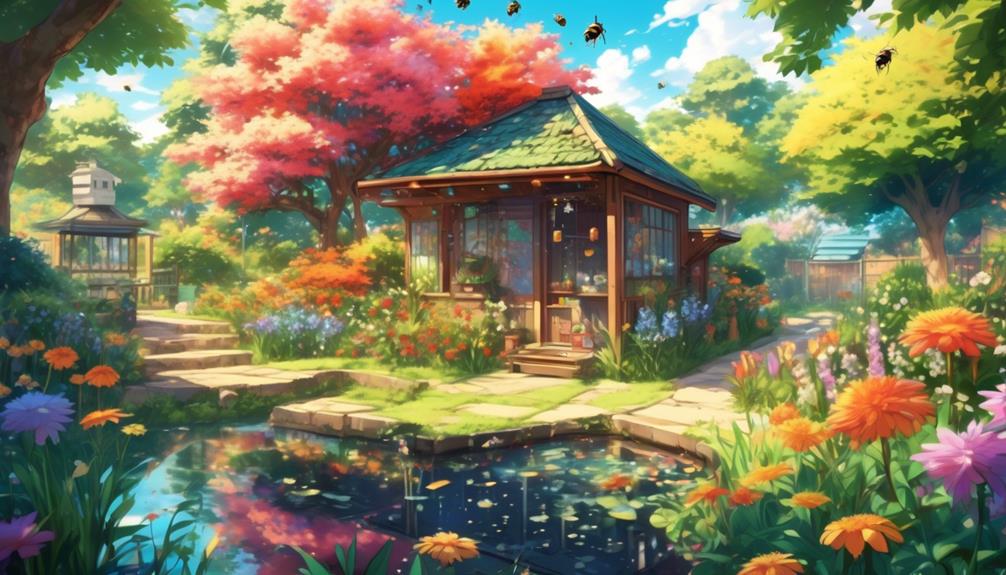
To keep your garden buzzing with mason bees, you'll need to focus on its ongoing upkeep, preserving the diversity of plants and ensuring a continuous bloom cycle. This means planting a variety of nectar and pollen-rich plants that bloom at different times. Flowers such as crocus, hyacinth, and calendula offer early spring bloom, while asters and goldenrods keep the garden vibrant into fall.
Remember, mason bees are solitary and don't live in hives. They need small cavities for nesting. You can provide this habitat using a mason bee house or by leaving dead wood and pithy-stemmed plants in your garden.
Avoid using pesticides, which can harm these beneficial insects. If you must manage pests, opt for bee-friendly methods. For instance, introduce beneficial insects that prey on pests, or use insecticidal soaps sparingly and in the evening when bees are less active.
Lastly, provide a mud source, essential for mason bees to seal their nests. A simple shallow dish filled with loamy soil and water will suffice.
Through these steps, you're not only maintaining a bee-friendly garden, but also contributing to the conservation of these vital pollinators.
Conclusion
Attracting mason bees isn't rocket science. By understanding their needs, creating a desirable environment, building a bee house, choosing the right plants, and maintaining a bee-friendly garden, you'll be a mason bee magnet.
Remember, their survival aids our ecosystem. Your efforts to attract them not only enhances your garden, but also contributes to a larger environmental cause.
So, roll up your sleeves, and let's welcome these tiny pollinators into our gardens.

